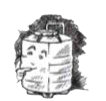Given a cylindrical tank, in which situation will you find surface area and in which situation volume.(a) To find how much it can hold.(b) Number of cement bags required to plaster it.(c) To find the number of smaller tanks that can be filled with water from it.
To solve the problem, we need to determine when to use the surface area and when to use the volume of a cylindrical tank based on the given situations.
1. Situation (a): To find how much it can hold.
- This situation is asking for the capacity of the cylindrical tank. The capacity of a tank is measured in terms of volume.
- Formula for Volume of a Cylinder:
V=πr2h
where r is the radius and h is the height of the cylinder.
Conclusion: Use Volume.
2. Situation (b): Number of cement bags required to plaster it.
- This situation is related to the area that needs to be covered with cement. To find out how much area needs to be plastered, we need to calculate the surface area of the cylindrical tank.
- Formula for Surface Area of a Cylinder:
SA=2πr(h+r)
where r is the radius and h is the height of the cylinder.
Conclusion: Use Surface Area.
3. Situation (c): To find the number of smaller tanks that can be filled with water from it.
- This situation is again about the capacity of the tank, as we want to know how many smaller tanks can be filled with the water from the larger tank. This requires calculating the volume of the larger tank.
- Using the Volume Formula:
V=πr2h
We would then compare this volume with the volume of the smaller tank to find out how many can be filled.
Conclusion: Use Volume.
Final Summary:
- (a) Volume
- (b) Surface Area
- (c) Volume
- This situation is asking for the capacity of the cylindrical tank. The capacity of a tank is measured in terms of volume.
- Formula for Volume of a Cylinder:
V=πr2h
where r is the radius and h is the height of the cylinder.
- This situation is related to the area that needs to be covered with cement. To find out how much area needs to be plastered, we need to calculate the surface area of the cylindrical tank.
- Formula for Surface Area of a Cylinder:
SA=2πr(h+r)
where r is the radius and h is the height of the cylinder.
- This situation is again about the capacity of the tank, as we want to know how many smaller tanks can be filled with the water from the larger tank. This requires calculating the volume of the larger tank.
- Using the Volume Formula:
V=πr2h
We would then compare this volume with the volume of the smaller tank to find out how many can be filled.
- (a) Volume
- (b) Surface Area
- (c) Volume
Topper's Solved these Questions
Similar Questions
Knowledge Check
A primitive diving bell consists of a cylindrical tank with one end open and one end closed. The tank is lowered into a freshwater lake, open end downward. Water rises into the tank, compressing the trapped air, whose temperature remains constant during the descent. The tank is brought to a halt when the distance between the surface of the water in the tank and the surface of the lake is 40.0 m. Atmospheric pressure at the surface of the lake is 1.01×105 Pa. Find the fraction of the tank's volume that is filled with air.
A0.205B0.333C0.257D0.435A cylindrical tank has a hole of 2cm2 at its bottom if the water is allowed to flow into tank from a tube above it at the rate of 100cm3/s then find the maximum height upto which water can rise in the tank (take =g=10ms−2)
A2.5×10−2mB1.25×10−2mC5.5×10−2mD3.5×10−2m
Pipe A can fill a tank in 3 hours. But there is a leakage also, due to which it takes 3.5 hours for the tank to be filled. How much time will the leakage take in emptying the tank if the tank is filled initially?
View SolutionA 105 cm high tank is in the shape of frustum of a cone. If the diameter of the circular faces are 50 cm and 40 cm, then find how much water can be stored in the tank.
View SolutionIf A can fill the tank in 10 days and B can fill the same tank in 20 days and C can empty the same tank in 30 days . find how many days tank will full if all three work together.
View SolutionA leak can empty a completely filled tank in 15 hours. If the tank is full of water and a tap is opened which fills 4 litres of water per minute in the tank. The leak now takes 30 hours to empty the tank, then find the capacity of tank.
View SolutionTwo tanks contain 735 litres and 504 litres of water resepectively. Find the maximum capacity of a container which can measure the water of either tank an exact number of times.
View SolutionIf a pipe fills a tank in 4 hrs and another pipe can empty the full tank in 6 hrs. When both the pipes are opened together, then find the time required to completely fill the tank.
View Solution

